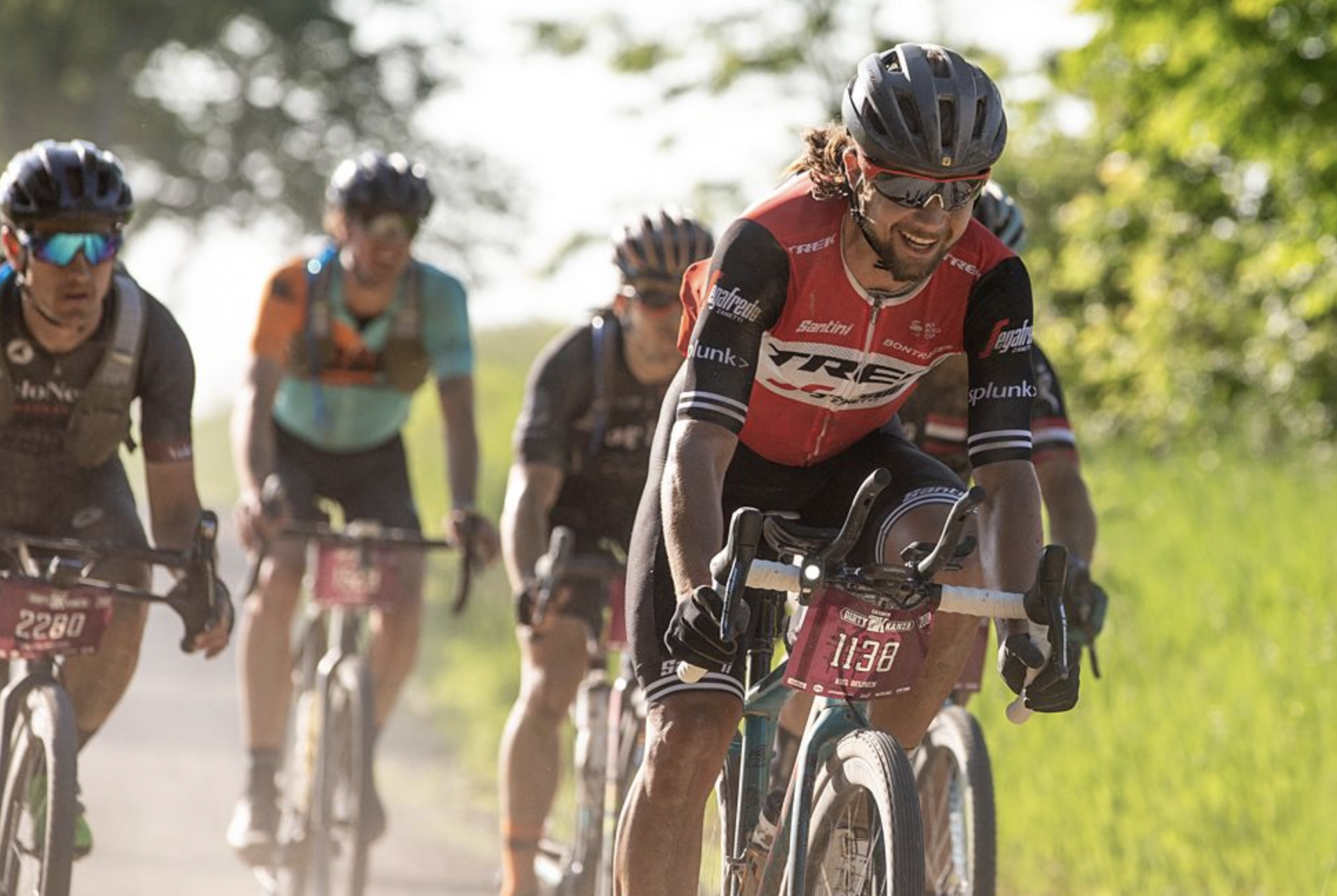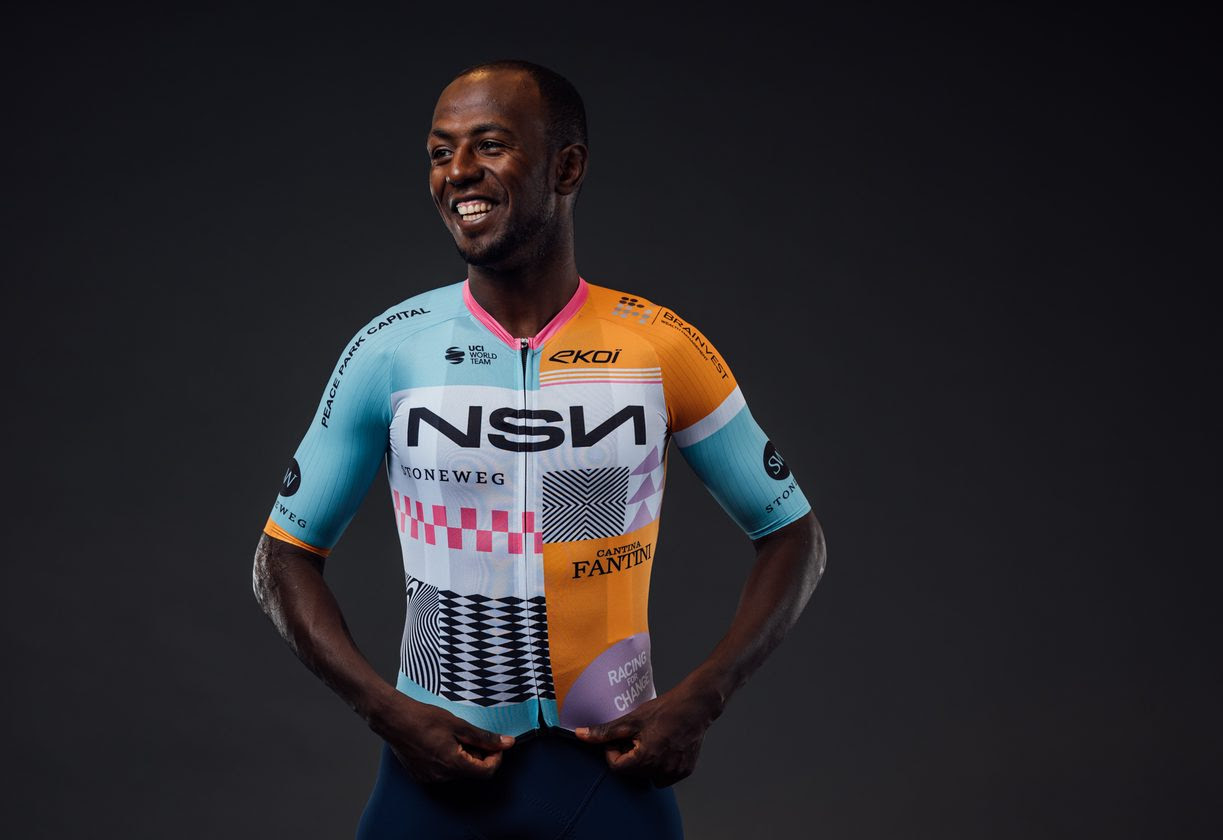Should aero bars be used in gravel? Unbound racers debate
Boswell, Stetina and Reijnen try to reach a consensus

Last week an email chain circulated among most of the Unbound Gravel favourites in the men's race. The goal was to find some consensus on the use of aero bars. "We're trying to talk, those of us who do have a small position in this sport at this moment, we're trying to help steer it in the way we want it to stay," said last year's third-place finisher, Peter Stetina.
One side is in favour of a communal agreement for those planning on riding in the front pack to not use aero bars. While it's likely true that most gravel pros would prefer that no one in the front group uses aero bars, they recognize that as soon as some do, others follow. And apparently, some top contenders have sponsorship obligations with yet-to-be-released bars that allow different aerodynamic combinations.
While it's true that aero bars have a history in the roots of gravel racing, they were used mainly for comfort by lone riders in long-distance events. Having the ability to change positions on the bike therefore has precedent but gravel racing has evolved. There is more horsepower across all categories of the sport and pack dynamics. Several of the top racers want to normalize safe, honest racing.
Aero bars add an unwanted element of stress in the bunch and riders are concerned about safety. "It's dangerous for themselves and others. You have no brakes in the aero position, how can you ride in a group without brakes?" asks Ian Boswell, who won Unbound Gravel last year without the use of aero bars.
Boswell wants willpower and legs to decide who wins Unbound, not sly tactics. "The most frustrating thing is people trying to find an advantage over others. The front pack needs to be unified. Either everyone does something or nobody does. If everyone made a decision not to use aero bars, people wouldn't use them. All it takes is one person in the front to use them and then people think they need to as well. It's so fragile right now, it only takes one or two people to play a different game," says Boswell.
Kiel Reijnen's opinion is mixed. "If you asked me to vote, I'd be in favour of getting rid of aero bars," he says while clarifying he's not referring to the people who use aero bars for comfort. "If aero bars are going to get you through the event, no one should take that away from you. If you're going to be at the pointy end of the group with pack dynamics, aero bars don't really have a place."
Reijnen spoke about racing the recent Gravel Locos in Texas, where the group stayed intact for much of the distance as they mourned the sudden death of Mo Wilson, murdered days before the event.
The latest race content, interviews, features, reviews and expert buying guides, direct to your inbox!
"There were definitely times where I was riding behind someone with aero bars and we were going through sections that were a little bit sketchy and I was very nervous about their aero bars. So from a safety perspective, there's definitely an argument, especially as the front group is larger and larger later in the ride. There's a higher level of abilities at these events and that makes safety a greater concern," Reijnen said.
Stetina agrees. "Aero bars have their place in gravel, as an ultra-endurance sport, [gravel] has been about survival, you spend a lot of time on your own out there. But at the very front of these big races like Unbound, we're not surviving. It's more competitive than it has ever been. We don't really need them."
Stetina is looking for a middle way. He's using an unreleased Pro bar hand extension mount that he called a "GPS mount." Stetina feels he needs something to stay competitive because "there are enough guys using aero bars that you're going to have to somehow still race against those guys."
He pointed out that colleagues Keegan Swenson, Nathan Haas, and Freddy Ovett are all also on a similar Pro bar extension setup. Stetina said his bars are for taking pulls, not for pack riding. "You can't stay in this [position] for hours or be unsafe in the peloton but you know, as you roll through on the front you can hunker down."
Stetina argues that his setup is simply a safer version of the kind seen for decades in road racing where someone mimics aero bars with their bare arms. "Basically, all it does is give you a safer option for the 'puppy paw' that you see just resting forearms on the bar. I feel like it's safer and a good compromise to still be competitive but kind of stand up for what I believe in the sport."
Something Stetina cares about is keeping gravel accessible. "You can spend $100 on a mount, you're not spending $3,000 on a handlebar and wind tunnel," Stetina said.
"People are showing up with 3D printed custom handlebars and that's creating a barrier. Gravel is not the 'everybody sport' if you spend $3,000 on a custom cockpit to be competitive at the front. So I feel like [gravel] is losing the balance which is why I made the decision, along with many of my contemporaries to not use them [aero bars]. We're walking the walk. I used aero bars in the previous two editions of Unbound and there's no denying they're faster. But this win-at-all-cost mentality is a turn-off for a lot of us right now.
"I think you'll see a lot of the main protagonists not on them but there will be people who are using them. And I want to be clear, there's not a wrong answer. But this is how a lot of us feel right now."
Marshall Opel started out as a young road bike racer in Montana, and found success as a junior racer for both the junior and U23 US National team. He has swapped racing for writing, and has covered gravel rides across the US extensively in the past three years.
